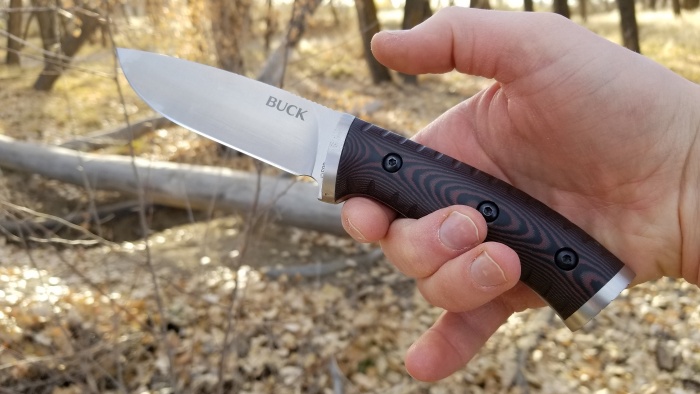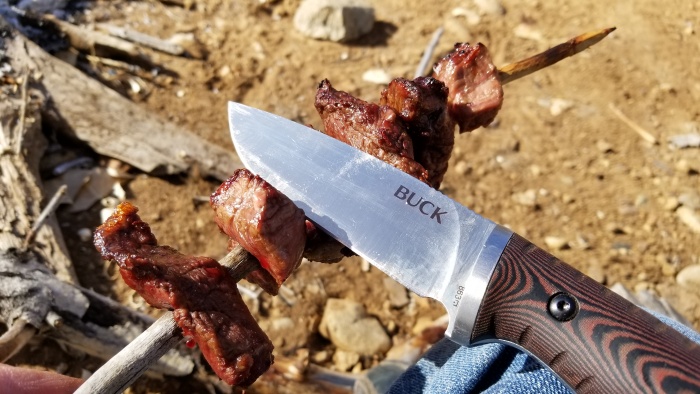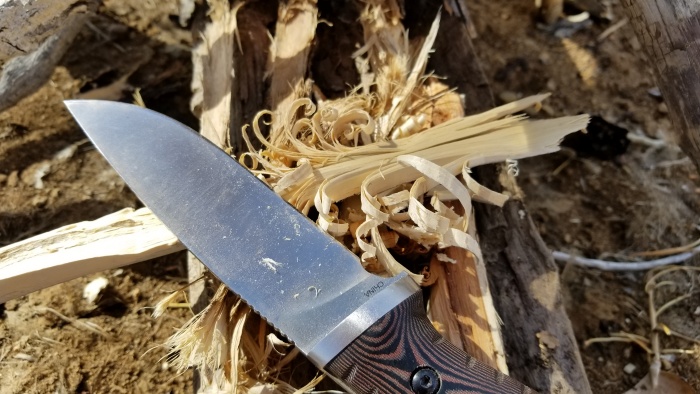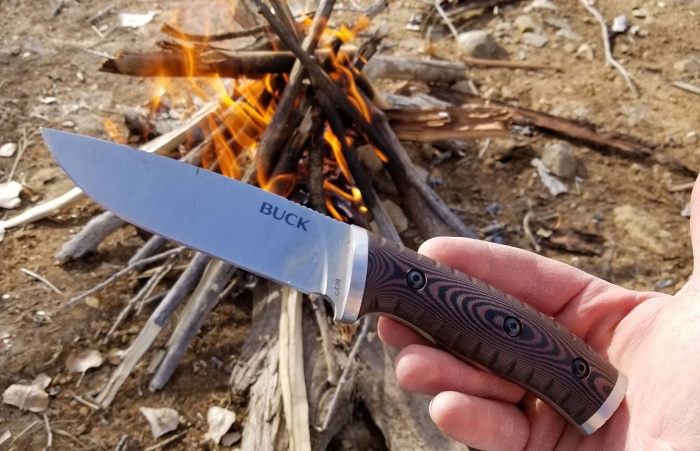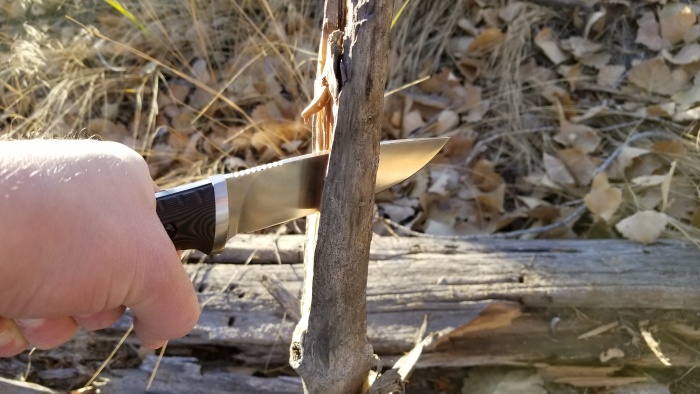Lots of utility, a reasonable price, and just the right amount of imperfections make the Selkirk an ideal novice knife.
For quite some time, I’ve been searching for the perfect novice knife – something equally capable as a camp, cooking, and firecraft companion. One such candidate was the Buck Selkirk.
Available for $87 through the company’s website (or as little as $55 over at KnifeCenter), the Selkirk offers an inexpensive, all-around design that serves as a teaching template for folks new to the outdoors. Buck recently sent one over for review, and I spent several weeks putting it through its paces.
In short: This Chinese-made (one of the few drawbacks called out by many reviewers) blade offers basic steel that’s plenty durable and great for sharpening away beginner’s mistakes. The included ferro rod and an un-beveled spine provide a means to make fire without damaging the blade. Overall, it performs well for basic bushcraft at a price almost anyone can appreciate.
Buck Selkirk Specs
Here’s what you get in Buck’s beginner’s blade: 9.5 inches of 420HC steel, with contoured Micarta handles framing a full tang. Of that length, 4.625 inches make up the blade, including its sharpening choil.
Front and rear bolsters bracket the handle scales and can be removed for maintenance. The Selkirk measures 0.135 inches across the shoulders, offering a welcome combination of solidity and slicing capability. Sans sheath, the knife tips the scales at 7.6 ounces.
Also included is a 2.25-inch ferro rod, with an emergency whistle built into its grip.
The Selkirk’s injection-molded nylon sheath is one of the best I’ve tested. Its multi-mount system is easily adaptable, allowing for vertical or horizontal carry.
It rides light and easy in the standard style, with the handle rising a few inches above the belt. Retention is excellent, holding the knife securely while also offering a thumb ramp for retrieval. Both the blade and the included fire-steel are easily accessible with a single hand.
Alright. Let’s move on to the fun stuff.
Camp Tasks
Here’s where the Selkirk really begins to shine. Its solid construction and nimble nature make it a perfect campsite companion. I’ve chopped onions, meat, and other edibles without the slightest difficulty. In fact, I’d go so far to call it best field food-prepper I’ve tested.
It’s no slouch when it comes to bushcraft, either. While the flat grind may not offer the same benefits as a Scandi, I had no problems carving, batoning, and shaving wood.
Control is excellent thanks to strong ergos and grip. However, the blade jimping is something of a mixed bag. My thumb sits there nicely, but the finishing is a little rough. This could be knocked down with a few passes on a sharpening stone.
Campfires are always a highlight of my outdoor adventures. And while lighters and combustion kits offer convenience, there’s something intensely satisfying about sparking flame with a fire steel. Buck’s inclusion of a ferro rod is a perfect addition to this learner’s package.
In order to strike a ferro rod with this knife, you need two things. First, an uncoated (or very lightly coated) blade. Second, a 90-degree surface to create the necessary friction. Yeah, you can use the edge, but this generally isn’t the way to go.
Thankfully, the Selkirk features an un-beveled spine, allowing you to produce sparks with the back of the blade – no need to dull your blade.
I should note that my tester came with an uneven spine. One shoulder was sharper than the other, requiring me to perform fire-starting tasks with my left hand. Still, I was able to create flame after only a few strikes. Buck recommends using the area behind the sharpening choil, but for me, the topside offered better control.
Sharpening
Yes, 420HC isn’t the best steel out there (even with the legendary Paul Bos heat treatment). But here’s the thing: It’s a steel that’s incredibly easy to sharpen while still offering decent durability. Thanks to its low cost and workability, you can baton through a log or open a can with it and simply not worry.
This further cements the Selkirk as an excellent choice for beginners. Whatever mistakes someone makes in the field can be quickly corrected at the bench. And while I don’t usually advocate for steels that require semi-regular sharpening, this 420HC is a perfect practice medium.
It gives you enough edge retention to last through a camping or hunting trip, while becoming just dull enough for a visit to the stones and strop.
Buck Selkirk: Overall Impressions
Put simply, this is a great knife. Of all the blades I’ve tested, nothing has hit the outdoor sweet spot quite like the Selkirk.
Its multi-role capability and included fire steel make it a perfect choice for burgeoning bushcrafters. And while the finishing along the spine could have been better, it forced me to practice an infrequently used skill while remaining perfectly functional as a tool.
Overcoming errors and imperfections is a valuable part of learning. For whatever flaws the Selkirk may possess, it’s helped make me a better outdoorsman. It does nearly everything right while doing just enough wrong to make for an interesting experience.
That may not sound like a compliment, but it is. I highly recommend the Buck Selkirk for veterans and beginners alike. It’s a great option for the money, with plenty of personality to boot.

